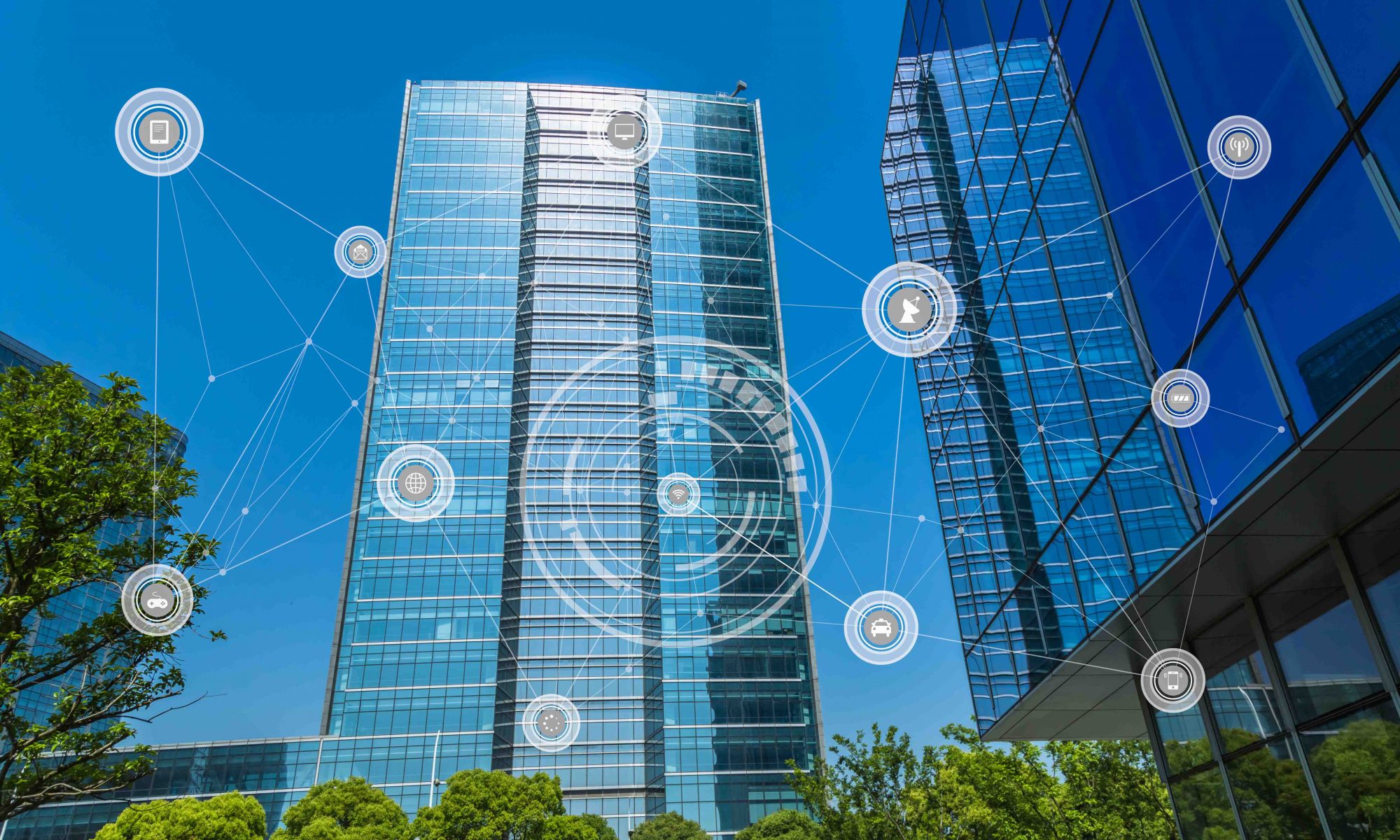BehrTech Blog
IoT for Smart Buildings: 5 Trends You Can’t Ignore
Smart buildings are at the cutting edge of commercial real estate innovations. Much of this revolution is predicated on unprecedented data influxes brought by the Internet of Things (IoT) that reveal fine-grained insights into previously unknown aspects of building operations. By marrying IoT data with existing building systems and other data sources, a smart building brings new levels of automation and command and control.
Having said that, IoT for smart buildings isn’t a pure technological concept. As much as a rock-solid digital foundation, forward-thinking property owners understand that they first need a well-articulated strategy and vision that act as the guiding light for their long-term smart building initiative. Knowing what the business cases are and where to harness the most value lays the groundwork for all technical implementation that follows.
For owners to better define and position their smart building strategy, in this blog, we identify five trends and applications that are dominating the market.
1. Tenants’ Wellbeing and A Safe Return to Work
Building management used to be almost synonymous with energy efficiency. Yet, with the emergence of modern building standards like WELL, there has been a renewed focus on tenant health and wellness in the built environment. Particularly in the wake of the COVID-19 quarantine, reassuring employees’ safety for a confident return to work is now more important than ever.
Constant monitoring of indoor climate conditions is crucial to maintain a comfortable, productive and personalized environment for occupants. As such, the ability to track diverse environmental variables – from temperature and relative humidity to air, lighting and sound quality – in real-time and with granularity is quickly gaining momentum. Concurrently, in the pandemic era, occupancy sensing is deemed to provide multi-purpose data for growing use cases like usage-based sanitation, traffic control and in-building navigation, to optimize hygiene and ensure safe physical distancing for visitors and tenants.
2. Agile Smart Workspace
Emerging work trends like activity-based working, remote work and co-working have taken the world by storm. And their prevalence only amplifies following the global health crisis. As businesses are embracing new ways of working and changing employees’ priorities, the modern workplace is poised to evolve.
IoT occupancy and traffic flow data allows firms and building owners to effectively gauge how different areas of the office space are being used. Armed with this information, they can make informed decisions on space layouts to maximize utilization while sparking innovation and collaboration. Specifically, organizations can better rightsize meeting rooms and configure the optimal mix between open, cooperative space and individual, focus zone – based on actual demand. Likewise, innovative models like hot desking or flex space can be introduced to increase space efficiency and fulfill the need for more fluid, agile work settings.
3. Smart Energy Management
The quest for higher energy efficiency in building operations shows no sign of slowing down, amidst rising utility costs and environmental challenges. As governments around the world continue to set ambitious energy conservation targets in an effort to reduce global carbon footprint, smart building technology promises to play a central role.
Many commercial buildings today succumb to significant energy waste caused by unnecessary HVAC and lighting activities. Using IoT data as a feedback loop, greater efficiency can be achieved with decentralized, on-demand equipment control that takes into account occupants’ behaviors and preferences, alongside real-time indoor conditions at discrete zones. Concurrently, wireless sub-metering systems offer granular insights into electric, water and gas consumption to uncover abnormal usage trends and determine waste sources.
4. Predictive Maintenance and Asset Digitization
According to the EU Community Research and Development Information Service (CORDIS), maintenance costs far exceed the construction costs of a building throughout its lifecycle. With that in mind, IoT for smart buildings can reduce maintenance costs by 3 to 9 times by empowering predictive maintenance in replacement of the traditional reactive approach.
Due to the challenge of siloed building automation systems, most facility operators today have little to no visibility into the current conditions of critical assets like air-conditioning units. In this context, next-gen wireless smart sensors can be easily retrofit inside or outside legacy equipment to gather various parameters on its operational status that were unattainable before. Having this data at hand, operators can effectively detect telltale signs of asset failures to schedule maintenance in advance.
For example, abnormal trends in temperature, noise, ammonia and other data points inside a walk-in cooler room indicate impending problems of the freezer, allowing corrective work orders to be timely executed before serious a breakdown happens.
5. Data-Driven Digital Services
The use of IoT data in smart buildings isn’t just limited to owners and facility managers. Beyond on-premises systems, relevant sensor data can be fed into a cloud-hosted platform and retrieved at a tenant experience app, offering exciting opportunities to maximize comfort and productivity with high-value digital services.
The app delivers a channel for tenants to better access to building conveniences and amenities. For example, they can easily find and navigate to available parking spots, receive occupancy updates on common spaces, reserve room and amenities on demand, or get instant notifications of facility issues like water leakage – all via a single user interface. Ultimately, these services play into a frictionless tenant experience to improve engagement and retention.
Final Thoughts
The magic of IoT for smart buildings is that it can be applied across all property classes – from office and retail to residential and campuses. The umbrella applications and value pillars are often repeatable across facilities, allowing CRE companies to maximize return-on-investment of their deployment. Being able to stay on top of major market trends that are happening, property owners can work out their own strategy to ride on the smart building wave.

